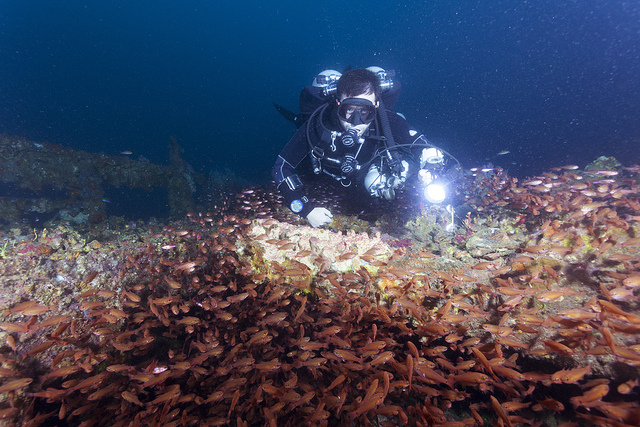Artificial Reefs: When and When Not
I recently had some discussions with marine bio friends about the seemingly accelerating trend of placing “artificial reefs” in the ocean. I am not anti-artificial reefs. I think they can play an important role in restoring damaged coral reefs. What’s necessary are clearly identified purpose & aims, and the correct way to try to reach these aims. Just depositing a lot of concrete or metal structures in the ocean, without careful considerations of the problem one aims to solve and often according to the motto “more helps more”, is not the way to go forward.
For example, this blog post I link to below describes an excellent case of how artificial reefs can help to recover, within a few years, a coral reef which had been destroyed. The conservation action was taken in Indonesia. The aim was clear, the methods were appropriate, and the progress was monitored long-term:
Reef restoration can bring back important ecosystem functions
So What To Do?
I put together some insights from the scientific literature and my own reasoning on how to go about deciding if artificial reefs are necessary or not. The reasoning is organized in 2 connected flowcharts:


CT stands for “coral transplantation” and AR for “artificial reefs”, EcIA for “ecological impact assessment”.
Here you go. Start at the top of flowchart one, and see where you end up, given the specific situation at the piece of ocean you are interested in. Do you end up at “full scale complete restoration”? The decision whether to use ARs or CT is not an easy one, and a thorough reading of Abelson’s paper from 2006 (linked below) and other scientific literature, plus talking to experts is in order then. But do you even get to the “full scale complete restoration” box?
Worth Watching
I hadn’t even read the paper by Abelson before recording this vlog, but in a somewhat simplified form, I came to similar conclusions. Do you even need an artificial reef? What is the problem you are trying to solve with it?
I hope all of this provides good rules of thumb for the prospective artificial reef makers. It’s better to be really careful in these matters, imo.
Infobox: Seagrass and Soft Bottom Habitats are Valuable
A misunderstanding which I think is at the basis of the inflationary use of artificial reefs, is the belief that seagrass and sand are somewhat “empty” spaces, which unfortunately don’t have corals yet. They need to be helped, so that they can be thriving too. This is absolutely not the case, seagrass meadows are of course recognized as a productive, biodiverse, valuable ecosystems. Seagrass is not “unfortunately no coral reef there”.
In 2023 I released a documentary about the biology of “muck habitats”, as scuba divers call them, or “soft bottom habitats”, as they are called in marine biology. These habitats are also getting an increasing amount of attention as the homes of a unique, highly adapted fauna. Again, these are not drab places which are just lacking corals. Here is the documentary, I am still really stoked about the footage which went into it:
Infobox: Caution!
Once you have concluded that artificial reef making, or even coral gardening is warranted, you still have to do it right. In many cases there are legal hurdles (especially when moving living corals), and you have to get the methods right for both approaches in reef restauration. How to implement these approaches correctly goes wayyyy beyond this blog post, you will have to talk to the experts once you have decided to create an artificial reef or transplant corals.
This is an excellent policy brief by Michelle Z. Reyes and colleagues from De La Salle University, Philippines about coral gardening.
The paper by Abelson, on which flowchart 2 is based, linked below is also a good, cautionary read.
Reference:
Abelson, A. (2006). Artificial reefs vs coral transplantation as restoration tools for mitigating coral reef deterioration: benefits, concerns, and proposed guidelines. Bulletin of Marine Science, 78(1), 151-159.
